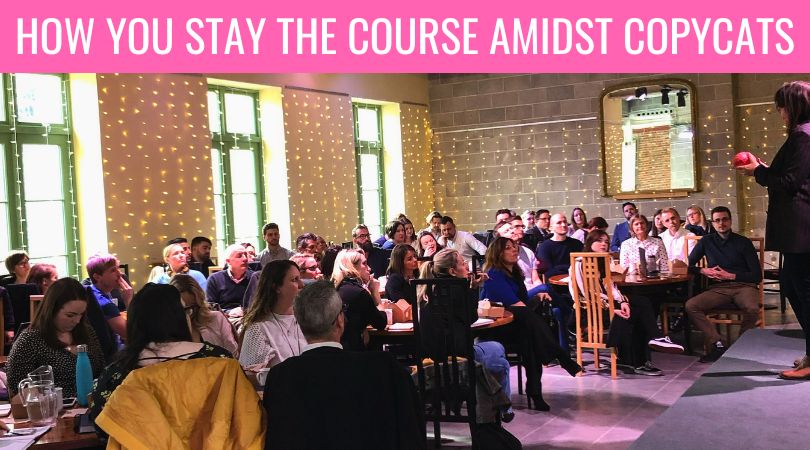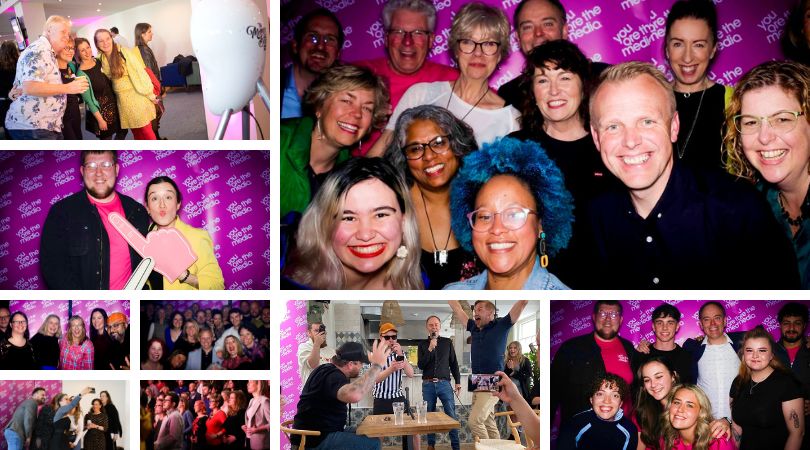The Copycat Conundrum: How To Thrive Despite Imitation

The hard part is never making your idea live. It’s sticking with it for years until it works.
It’s easy to protect and safeguard the work we do in the fear that someone may swoop down and replicate and take the glory.
When you take a step back, ideas and IP (intellectual property) are the seeds. It’s the relentless execution and loyalty from the right people that cultivate the longevity of the field you grow.
Sharing A Story With You
Recently, one of the products from the YATM portfolio had its name used elsewhere.
Completely unfamiliar, no relationship and the biggest obstacle is confusion to people if they thought that YATM and the ‘other’ were interlinked.
It’s never a good feeling to see a name associated with what you do used elsewhere. It’s easy to become frustrated.
This situation could happen to anyone. You put the time and effort into nurturing an initiative or a project, only to be made aware of something that recently arrived on the horizon. Sometimes you may even discover by chance.
Framing The Response
This is how I had to frame my thinking, beyond feeling frustrated and the divine right that we think our work is untouchable.
It paves the way for two paths:
1) The Intellectual Property Route:
This means you safeguard by any means necessary. You ring fence your world and if anyone steps in, you hold the ‘leave’ sign up to protect at all costs. However, so much is copied today.
2) The Focus & Effort Route
You concentrate more on the space you have nurtured so you stand in a place of one that no one can compete with. This represents the true intellectual property invested over the long term.
I decided to take the second path.
Embracing The Journey
Let’s get over ourselves and think we have a right to be protected. There is always something or someone lurking in the shadows. None of us are safe.
People can replicate your work, mimic your style and imitate names and approaches, but what they fail to see is the arduous journey. It’s the sweat, persitence and sleepless nights behind the achievements you produce that matters in the long run.
It’s similar to an exam. Anyone can step up and take the exam, but the hours of work, thinking, learning and concentration give you a chance of succeeding.
Just because a logo, a name, a strapline, or an approach can be mirrored, there is much more to consider.
Building something meaningful isn’t about proudly stating that you have claimed sole ownership of an idea, it’s about the people who already feel a part of the space built and the evolving nature of the culture. Paving a stronger future is not around protection but encouraging an environment of openess and shared knowledge.
Bypassing copycat interpretations (whenever that time arrives) comes down to two pillars to have in place:
1. The close connection with your audience
2. A long-term approach to your work
Close Connection
When you have a kinship with your audience, any replica becomes irrelevant. People are already tuned in.
If you don’t have a connection with your audience, the path is far harder. For instance, 60% of Kickstarter projects are unsuccessful (Statista, January 2024). This is because the relationship with an audience is not there.
Crowdfunding is the easiest way to ask something from others without any prior connection in the hope someone will invest. I am highlighting the importance of reaching out to others in a personal and meaningful way and building the rapport, before you need help. When people are already familiar, you have built that space, the conversation flows and when you need to make that ask, there are people there for you.
You have to identify an angle where you create genuine value for people. Naturally, this takes time and when you start having those initial conversations, it can seem an overwhelming task but an approach where your narrative/content becomes a bridge between you and others, genuinely works.
What you’re doing is making an emotional connection that is far more valuable and long- term than generating ‘likes’ from an anonymous audience.
The connection you have with others becomes your IP. That sense of loyalty, being around others and feeling a part of something is the attachment.
When people know you are there, they feel like they belong. This becomes a worthwhile business approach where you are protecting what you have built and for others to have that closeness.
Wayne Mitchell highlights this perspective of closeness, ‘There may be a parallel name/idea/image but they won’t have invested in the true intellectual property in the way that matters. It’s the space built over time and the cultural engagement, that becomes the secret sauce.

A Long-Term Approach
The longer you are invested in something, the more you are effectively building your own IP.
It is short-sighted to focus on immediate returns. The more you are devoted, over time, the more you protect what you are committed to.
It all comes to how you look at the long and short-term. The short term can look fuzzy and not too sure if your efforts are producing what you expected. The building blocks over the long term help you understand that everything is part of something much bigger.
It’s not just about the volume of content, but the persistence to shape an idea and a thought process where you take ownership of.
From this whole process of seeing a similar name in the world, this is what I have learned. If you can build over time, you own the process which people can’t imitate. It also means that time can become an ally.
You are not the sum of the positive feedback you receive on a social platform, you are the sum of what happens from the attention gained from people who matter, over time.
When you put in the work, trust wins in the long run, it doesn’t matter what threat is on the horizon, as long as you keep your work relevant and never become complacent.
The original work you produce can stand the test of time, as long as you are committed to it. It means you will always be two steps ahead of the copycats. As the saying goes, ‘A photocopier isn’t an artist, even if it can recreate the Mona Lisa.’
How We Look At Ownership
We can never own ideas. They are fluid. We either miss an opportunity or we capitalise on it.
Instead of obsessing over protecting what we create, it’s better to focus our energy on progressing and making our work even more special for the people who commit.
Over time, you want to be the person or business remembered by others where they are prepared to commit to you.
Let’s Round-Up
The hard part isn’t merely conceiving an idea; it’s staying the course for years, weathering the storms of doubt and uncertainty until that idea blossoms into reality.
It’s never about who stepped up with the idea first, it’s about who delivered it, to the right audience, with the right message and the guts to make an idea work, over time.
Imitators and replicas are a part of life. It’s the dedication, persistence, and genuine connections you forge that set you apart. You just have to be committed to the journey.
Ideas can be fleeting, but loyalty, care and persistence are enduring.


